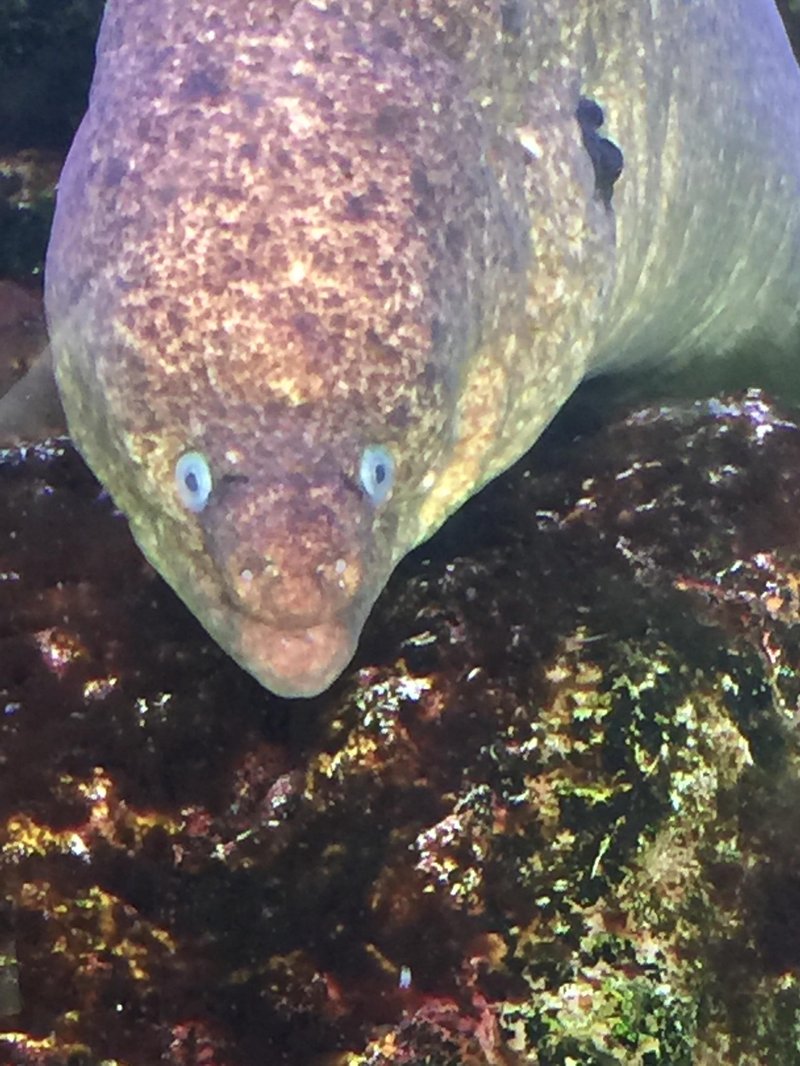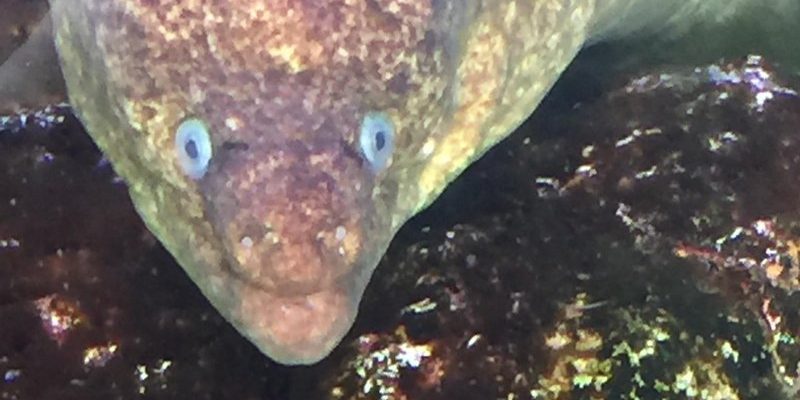
Understanding how the moray eel navigates and communicates can feel like peeling back layers on a complex ancient puzzle. It’s not just about the physical attributes, but also about the behaviors and environmental adaptations that come into play. Let’s take a friendly dive into the watery world of moray eels and discover how they navigate their underwater habitats and communicate with each other!
How Moray Eels Navigate Their Underwater World
Moray eels are masters of navigation in the ocean’s depths. They tend to inhabit rocky crevices and coral reefs, which can be a bit like a maze. Think about it—just like you might use landmarks and signs to find your way through a city, moray eels rely on their keen senses to understand their surroundings.
One of the primary senses these eels use is their sense of smell. Moray eels have a highly developed olfactory system, allowing them to detect scents from great distances. This is crucial for finding food and recognizing potential mates. With their nostrils located on the top of their heads, moray eels can easily sense chemicals in the water, which helps them navigate to safe spaces or hunt effectively.
They also take advantage of low-light conditions. Most moray eels are nocturnal, meaning they prefer to hunt and explore at night. Their eyes are perfectly adapted to see in low light, allowing them to spot prey when many other animals are asleep. This ability to navigate in the dark gives them a significant advantage in the underwater world.
The Role of Electrical Sensors
Now, here’s something fascinating: moray eels have a unique way of “seeing” their environment that goes beyond just sight and smell. They possess electrosensitive receptors in their skin that allow them to detect electric fields generated by other animals. This means they can “feel” nearby creatures, even if they’re hiding in the rocks or sand.
Imagine walking into a room but being unable to see anyone. You might still get a sense of where people are based on their breathing or movement. That’s similar to what moray eels experience underwater. These electrical signals help them find prey, especially fish, which emit weak electrical fields.
Furthermore, this capability is especially handy in murky waters where visibility is low. So, while you might rely on your sense of sight to navigate a dark room, a moray eel can confidently swim through darkness by tuning into electrical signals.
Communication Among Moray Eels
When it comes to communication, moray eels have a few tricks up their sleeves—well, fins! Unlike many animals that might communicate through vocalizations, moray eels primarily use body language and physical movements.
For instance, when two moray eels meet, they might swim close together, intertwine, and even perform gentle nudging motions. This behavior signals their friendliness or willingness to interact. You might notice them raising their heads or opening their mouths slightly, which can also indicate curiosity or caution.
Interestingly, moray eels also exhibit territorial behavior. If a moray eel feels that a fellow eel is infringing on its space, it can display aggressive postures. This might involve flaring its gills and arching its body to show dominance. It’s a fascinating dance of movement that reveals a lot about their social structure.
Vocalizations and Sound Production
You might be surprised to learn that moray eels can make sounds! While they aren’t known for singing like whales or chirping like birds, they can produce low-frequency sounds by grinding their teeth or using their throat muscles. These sounds are subtle but can carry through the water, signaling distress or discomfort.
Think of it like how we might grunt or mumble under our breath when we’re annoyed. So, when a moray eel feels threatened or is trying to communicate something important, it may produce these low rumbles. While they might not be calling out to each other in elaborate conversations, these sounds do play a role in their interactions.
The Importance of Sight and Color Perception
While moray eels rely on various senses, sight is still crucial for everyday navigation and communication. Their eyes, structured for low-light environments, are also sensitive to movement and colors. Many species of moray eels display vibrant colors and patterns, which can serve multiple purposes.
For instance, bright colors can warn predators that they are toxic or unpalatable, while specific patterns might help them camouflage against the coral and rocks. This way, moray eels can hide from predators while also signaling to potential mates.
When they spot other eels or marine life, their vibrant coloring can help them communicate their health and vitality. Just like how bright clothing might suggest confidence in a social setting, a moray eel’s vivid appearance can indicate fitness to others in their environment.
Adapting to Their Environment
Moray eels are experts at adapting to their underwater surroundings. Their communication methods and navigation techniques are fine-tuned to thrive in different habitats. Whether they’re tucked away in a rocky crevice or gliding through open waters, these eels have developed behaviors that suit their lifestyle.
For example, in more populated reefs, moray eels may be more social, communicating frequently with other eels and fish. In contrast, in areas with fewer companions, they might be more solitary. This adaptability allows each eel to maximize its chances of survival, whether through foraging, mating, or avoiding predators.
Every movement, from the way they swim to how they interact, plays a vital role in their success as a species. Understanding these adaptations helps us appreciate the delicate balance of marine ecosystems.
Moray eels are more than just intriguing underwater creatures; they are remarkable navigators and communicators. Their ability to sense their surroundings through smell, electrical signals, and visual cues, combined with their unique methods of interaction, showcases the wonders of evolution in the animal kingdom.
Next time you dive into the ocean or read about marine life, remember the amazing tactics moray eels use to thrive in their underwater environments. Their intricate navigation and communication skills remind us that the ocean is a vibrant tapestry of life, filled with creatures that have adapted in incredible ways. So whether you’re a budding marine biologist or just a curious observer, the world of moray eels is worth exploring!

